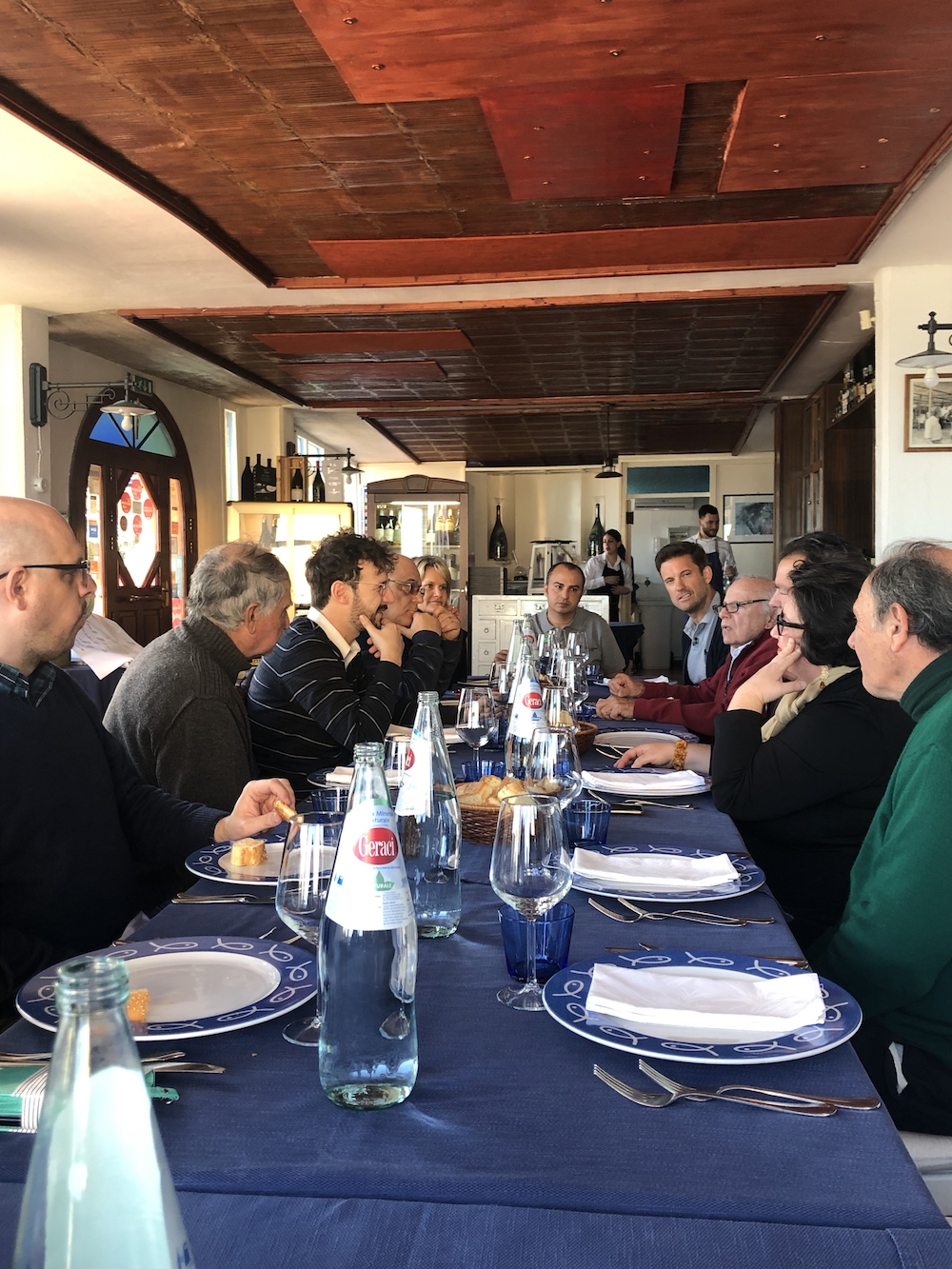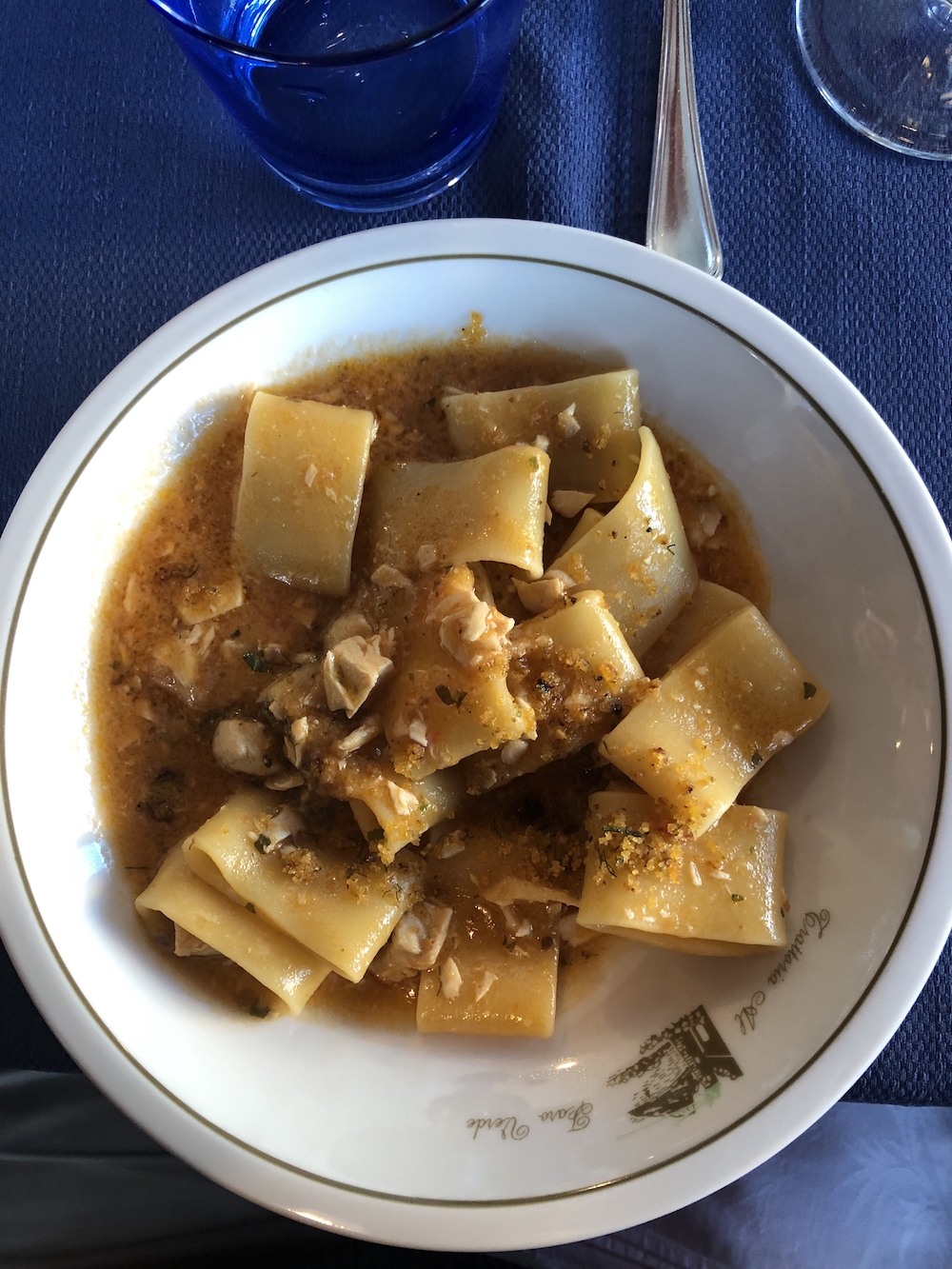Travel Podcast Ep. #8: Traveling Back to Your Roots
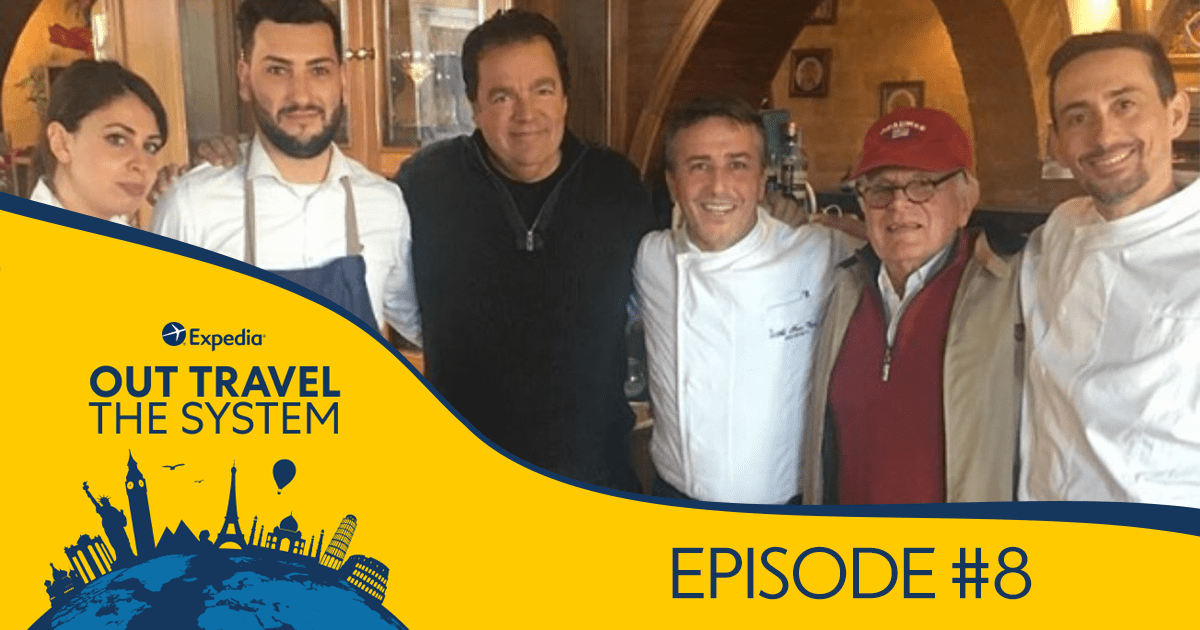
[full-width-paragraph]
Knowing where you’re from is just as important as knowing where you’re going. In this episode of Out Travel the System, Steve Balistreri traces his roots back to Siciliy, sharing details from the recent trip he took with his 82-year old father. Michelle Ercanbrack, a Senior Family Historian at Ancestry.com talks about the growing phenomenon of heritage travel and tips for planning your own ancestral journey.
Watch a reap of Steve’s heritage trip to Sicily
Expedia Travel Podcast
Episode 8
Nisreene Atassi: Family lineage has always played a major role in my life. My parents are both from Syria and they made a point to travel back to Syria with me and my sisters every single year. I’m so fortunate that I had that opportunity and that experience because as part of that, learning about our family tree was actually quite integral. In fact, in Homs in the town where my family is from, there’s actually a clubhouse and it was a tradition where every time a child was born you would go to the clubhouse and you would manually write in your child’s name into the family tree. The whole aspect of tracking your lineage and really being aware of who you are and having those travel experiences has been something that’s always been embedded in my life. If you think back to grade school we probably all at some point drew a family tree and now travel is taking that family tree idea and pushing it off into different directions, having the power to transform people’s lives.
Imagine being able to skip down the same streets that your great grandmother used to play on as a girl in a country far from your own, or trace that signature of your great-great-grandfather signed and stored in a tiny rural church where he married your great-great-grandmother. These are the kinds of experiences people are now having thanks to what we’ll call heritage travel. I’m Nisreene Atassi and this is Out Travel the System.
Get ready to be inspired as we take a journey along a family tree. Joining me today on the show I have two guests Michelle Ercanbrack, who is a Senior Family Historian at Ancestry.com and Steve Balistreri, who usually hangs out with his family in Milwaukee Wisconsin, but earlier this year Steve actually took a heritage trip to the suburbs of Palermo, Sicily where he walked in the footsteps of his ancestors.
So let’s just start with what made you want to research your family tree and then actually travel to the home of your ancestors?
Steve Balistreri: Being Italian, more specifically Sicilian, family has always been a very big part of all of our lives from the standpoint of going to family dinners out every Sunday and working the family business. So it’s been very important, but it became much more important when I was diagnosed with cancer in 2015. At that point, I really wanted to try to memorialize as much of the family history as I could for my children and their children so I signed up with Ancestry.com and started working on a family tree.
[/full-width-paragraph]
[full-width-paragraph]
Nisreene Atassi: What were all the different steps that you’ve embarked on with them?
Steve Balistreri: Initially I just signed up to do the research myself and it was actually kind of fun like trying to put a puzzle together but after a while you sort of run out of options so I took advantage of their genealogists and actually hired them to help me take it to the next level.
Nisreene Atassi: Take us to Sicily, you’re on this trip — what happened on your first day there?
Steve Balistreri: The first morning we went to Santa Flavia which is a small town where we’re from and actually some of our family is still in Santa Flavia. When we get off the bus, of course, the camera crew was filming us. You know there’s the big 60-person bus in this little town where the streets are extremely narrow so we couldn’t go to the city, we’re on the outskirts. We started walking with the camera crew and everybody’s wondering who we are, I mean it’s just not an everyday occurrence in Santa Flavia.
Nisreene Atassi: So the reason why Steve was there with the camera crew was that he was actually filming a segment with the Today show. So Steve is actually a little bit famous, famous is my dad and I want to be.
Steve Balistreri: Yes, as we continue through the city more and more people started following us. They are very curious as to what was going on. Why’s this camera crew here? What’s happening? So we did that until we went to the church where most of our relatives were baptized and quite a few of our relatives were buried underneath the church. We could do it out in the city.
Nisreene Atassi: How amazing was it being in that church? What were some of the emotions for you and your father?
Steve Balistreri: First of all, it was an extremely beautiful church and it’s so old and so ornate and we saw the actual baptismal bowl that our grandfathers and great grandfathers probably were baptized in. It actually hit my father much harder than it hit me and probably because it’s towards the end of his life. He’s 82 and he had been in Sicily back in the 70s a couple of times, so it’s been a long time since he’s been there. But you know being there and actually being in these places completes the circle of life. You see where you came from and where your ancestors came from as you mentioned at the beginning. I walk down those streets and they played on those streets and they went to these markets to buy food and went to church on Sundays. It all comes to life.
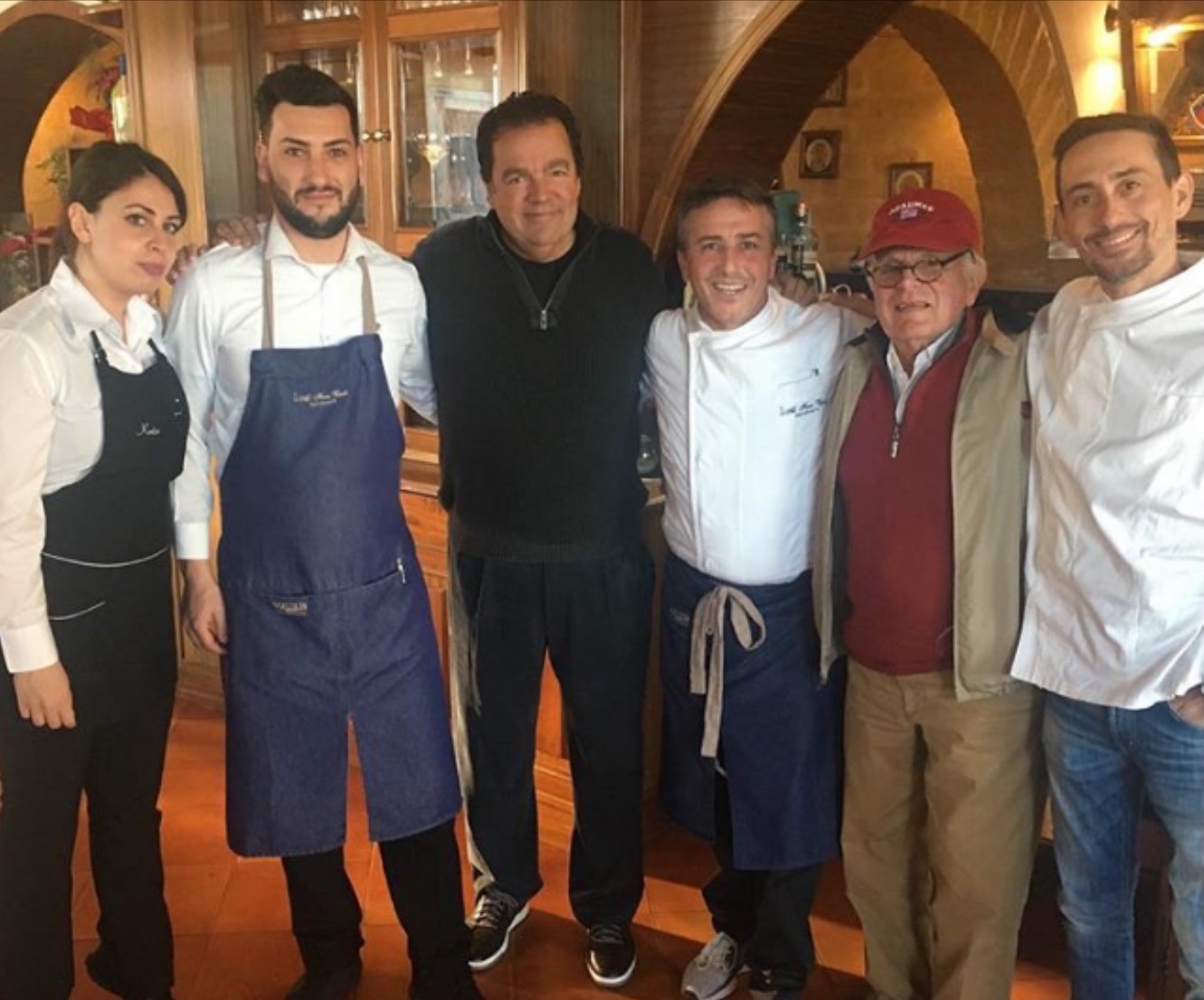
Nisreene Atassi: It sounds like it was a pretty powerful experience for him as well. I hear you had a really fun experience at a coffee shop that you guys walked into. Can you tell us a little bit about that?
Steve Balistreri: After we left the church we started heading towards the first of our ancestral houses that Ancestry had found for us and on the way, there was this tiny little coffee bar. So we go in there and by that time there had to be 35 or 40 people from the town following us, all chatting and wondering what the heck was going on. So we were in the shop and these three older gentlemen who are retired sort of break through the crowd and come up to us and confront us and say “what’s going on?” The interpreter with us explained to the men how we’re following our roots and these are the Balistreris. The men were like “we know the Balistreris, they are great!” and the just grabbed us and hugged us and gave us kisses and said how happy they were to see us and we just laughed and laughed and had a great little visit there, it was just tremendous.
Nisreene Atassi: Were they Balistreris as well or did they just know your family super well?
Steve Balistreri: Most of our family left the area in the early 1990s, but you know there are still a few Balistreris around, just really fun guys.
Nisreene Atassi: How did it make you and your father feel to be able to walk into a place you’ve never been before and be approached by three complete strangers and have them just sort of look at you and embrace you as if they know you just because of your family name?
Steve Balistreri: We felt extremely welcome and very comfortable just experiencing their culture. They work to live where here, we live to work. You see everybody on the sidewalks talking and everybody is very animated of course using their hands and there’s not a lot of people walking with their heads in their cell phones there’s so much more communication between people. It was wonderful. We felt like we were at home.
Nisreene Atassi: I love that, the feeling of home even if it’s a place that you’ve never been before. Michelle, I want to get your perspective on this because you have people like Steve discover details of their family trees basically every single day and he had a pretty profound reason for doing this. Why do you think so many people want to trace their roots and make this kind of a heritage journey?
Michelle Ercanbrack: I love Steve’s story it’s like this universal daydream of being able to go experience something new or see something beautiful. I think there’s also part of the American psyche of there being some form of the mother country, some origin story, this idea that if you live in the States, you probably have a heritage that came from someplace else whether it’s Italy or the Philippines. Within a few generations, there is a desire to go back and reconnect to those places and I think that that’s always been the case, but this idea of heritage travel I don’t think became mainstream until the TV show, ‘Who Do You Think You Are.’
The show started in the U.K. on the BBC, but in 2010 Lisa Kudrow became an executive producer and brought it to NBC and the show is in its 12th season, they’ve done 78 episodes and there’s a reason why after nine years this television show continues to resonate and it’s because of this discovery or reconnection with family narrative and there’s something powerful about that. There’s something really emotional about that and I don’t know how anyone could watch a show like that and not want that experience for themselves. Ancestry is a parent company to a business called Ancestry ProGenealogist and that is the business that Steve used to initially build out his tree and to learn more about his Italian roots.
They have heritage travel tours where you can have a genealogy expert travel with you to visit those places of origin, act as a translator and help you not just know the dates and places of where your ancestor was born, but look at the book where that event was recorded or to see the actual place where they might have been baptized in the church. There’s something really powerful and validating about that.
Nisreene Atassi: Michelle, you actually worked on that show ‘Who Do You Think You Are’ for some time. Was there one episode in particular or somebody who you felt like just had a real emotional connection that you guys were able to catch on film?
Michelle Ercanbrack: Oh my goodness, too many to name, but the one that comes to mind at this moment is Spike Lee. I didn’t work on his story, but I loved his episode because he’s learning about his family in the south. They were able to identify the land where his ancestors worked when they were enslaved and he has this moment where he is crouched down and just rubbing the dirt between his fingers and just talking about what that dirt might contain. He’s having this physical connection to the dirt, that dirt is the closest thing he has to touching his past.
Nisreene Atassi: Steve, is there a moment that you can single out from your first trip where you had that same “aha” experience?
Steve Balistreri: We went to the city hall in Santa Flavia and they actually pulled out the record book in which my great-great-grandfather signed with my great-great-grandmother, their wedding certificate, and their actual signatures were on these pages. To touch them, see them and we were wondering what this was like a hundred years or so ago standing over this book signing that. It was like wow it’s pretty amazing to see it come to life. The second time was when we went to our ancestral town center Alia and we found my great-great-grandfather’s home and he had ironwork over his door his initials put in there, “B” and “F” for Balistreri, Francesco and you’ll see that this is still there, still survived so much time we could look at it and touch it. It was pretty amazing. Then we were told as we turned around to look to the sea that this white house there was where his wife was born and lived. So they lived about a block away from each other, they could see each other’s houses. They eventually end up getting married and continued the family.
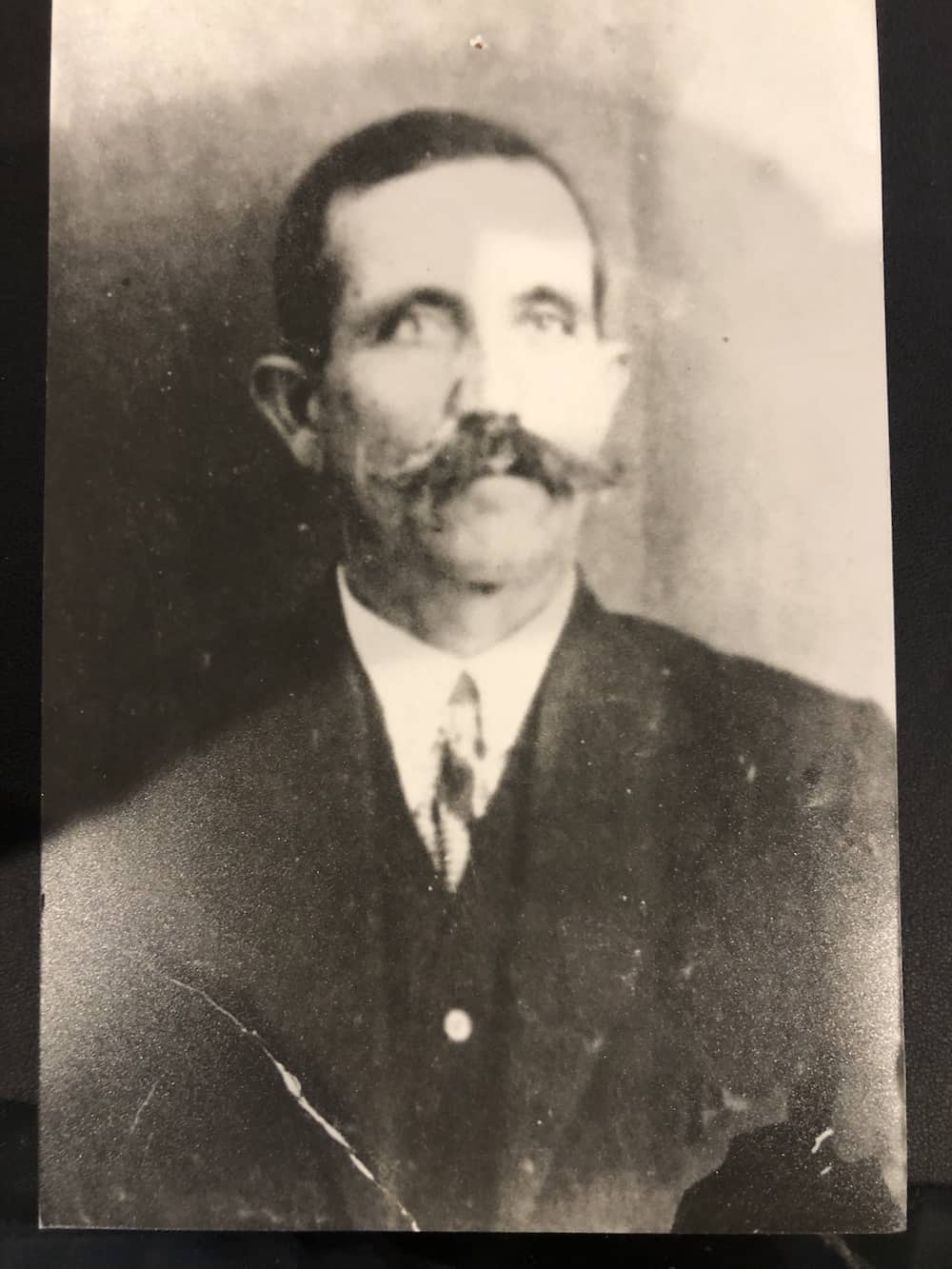
Nisreene Atassi: The fact that these types of things are preserved in history for you I think is just absolutely incredible. I know you have a family back home in Milwaukee and you have kids. What was their reaction when you were able to share some of this with them?
Steve Balistreri: We took a lot of pictures so we were able to show them a lot of this. They thought it was really cool and they actually want to visit. I’m tentatively planning on going to Sicily maybe for a month next year to really dive into the culture and invite my children to come out for a week or so to experience such a wonderful way of life over there.
Nisreene Atassi: You mentioned that your health was the impetus for wanting to dive in more to learn about your family. So can I ask how is your health now?
Steve Balistreri: Great! It’s been two and a half years of which I’ve been clean and my cancer’s in remission. I think I’m going to be fine.
Nisreene Atassi: Michelle, you touched on the fact that you had a heritage trip of your own right here in the United States. Tell us a little bit about what happened with you when you stumbled upon your own heritage pieces?
Michelle Ercanbrack: I know that there is a specific formula that we can follow of finding an ancestor, telling their story with two to three documents and trying to help the subject connect to that past. It’s kind of this foolproof formula for tears. Having done this for a living suddenly I realized that I had never had that experience for myself and I kind of needed to taste my own medicine. It hadn’t dawned on me that I hadn’t done that until I was kind of in the midst of one. My husband and I were asked to go with a youth group on a camp trip in the middle of Wyoming and I knew that I had family from Wyoming. I’d been told stories about one of my great-great-grandfathers being in the Pony Express and I knew that they were farmers there, but in preparing to go on this camping trip I had an aunt tell me, “Well you know that further back in the tree your third great grandmother was stranded in the middle of Wyoming in a snowstorm. You know that story right?” and I didn’t. I immediately dug in and I found the story and then realized that that was right where we were going to be. There’s this quiet moment where I was standing on a hill in Wyoming and honestly, there’s nothing out there for miles, we’re hours from stores or cell phone towers or hospitals.
I mean there’s a quiet and a stillness that you get that far from civilization that you really can’t get anywhere else. The enormity of what she had done kind of all came crashing down on me. She was from England, she and her husband went separate ways and she was a religious convert to the Mormon church and decided that she wanted to go out to the United States. As a single mom, she took her 12- year-old boy on a ship, which even crossing the Atlantic in the 1850s was probably harrowing in and of itself, but as a single woman, I think that that would be scary. I mean it would have been completely alien, you would have never seen that much open space ever. To travel for not just weeks but months, I just think it took so much bravery to do what she did. They got caught up in a horrible winter storm in October and they had to be rescued. So many of her traveling companions died due to exposure and starvation and she and her boy miraculously lived. We hear these stories, I mean everybody has a family narrative, and truthfully if you don’t, you do, you just need to reclaim it. There are stories of survival and triumph and tragedy in every family tree and it’s in knowing those stories that we connect to this thread within ourselves that we can’t have been easy.
Nisreene Atassi: It’s hard to articulate truly really powerful. Steve just coming back to you really quickly, what tips would you have for people who might be exploring or thinking of doing something similar?
Steve Balistreri: I think you have to do your research or go with a group that has the experience as we did and saw so much in such little time.
Nisreene Atassi: Michelle what about you, any tips for our listeners?
Michelle Ercanbrack: Absolutely. Family Growth usually happens when there’s a marriage or the birth of a child or when you have a loss in your family. It’s in that ebb and flow within your family that you start to think of yourself as part of something bigger or as a link in a chain that extends back and that goes forward. I think that sometimes that interest or hunger for family history doesn’t come until you to have a moment like that. But heritage travel is kind of an alternate route whether you have that hunger or not, taking a DNA test is a really easy entry point into learning more about where in the world your makeup comes from.
I know a lot of people have done that because it’s really simple to do what you’ve inherited and then that can give you a list of possible destinations that you can work through and just kind of go and connect with something that has more meaning to you. I love what Steve and his family did which is on a little more detailed level which is actually going and collecting the names, dates, and places of your parents and grandparents, finding those historical records that tell their story. Ancestry.com adds on average of two million new records a day so there’s always something new to find. A passenger list or a naturalization record or a passport application can give you a glimpse into where that family lived before and then it becomes a lot more personalized because you have a specific city and you have specific family names.
Nisreene Atassi: I think that’s a really good message that you could be 10% Swedish and 15% Italian or 20% French, but that doesn’t mean that those places should be any less of a connection for you. I think you can also take it small and just start using this as an opportunity to want to go back and just start to learn more about the cultures.
Thank you to you both for coming on the show and for sharing your stories. Come find us on Facebook Instagram, and Twitter to share your stories if you’ve done a heritage trip. We’d love to hear about it or if you’ve got questions about where to start with your heritage trip. If you want to hear more stories like this and more tips and tricks of the travel trade, then subscribe right now so you don’t miss out!
Latest episodes:
[archivist template=”Category” category=”podcast” pagination=”3″ controls=”false”]
Listen to more travel podcast episodes
[/full-width-paragraph]
More Articles With Inspiration
You can have a relaxing soak pretty much anywhere in the country, but if you’re looking for a hotel pool experience that is far from average, this list is for you.
Do workcations work? Here’s what Americans think about them.
This Lunar New Year, Expedia returns with a "roaring" new set of travel predictions for the Year of the Tiger, developed by popular Hong Kong-based Fengshui Master, Qi Xian Yu.
From adventure to mindfulness, to trying new things and putting our phones away, these are the biggest travel trends you'll see in 2022.
